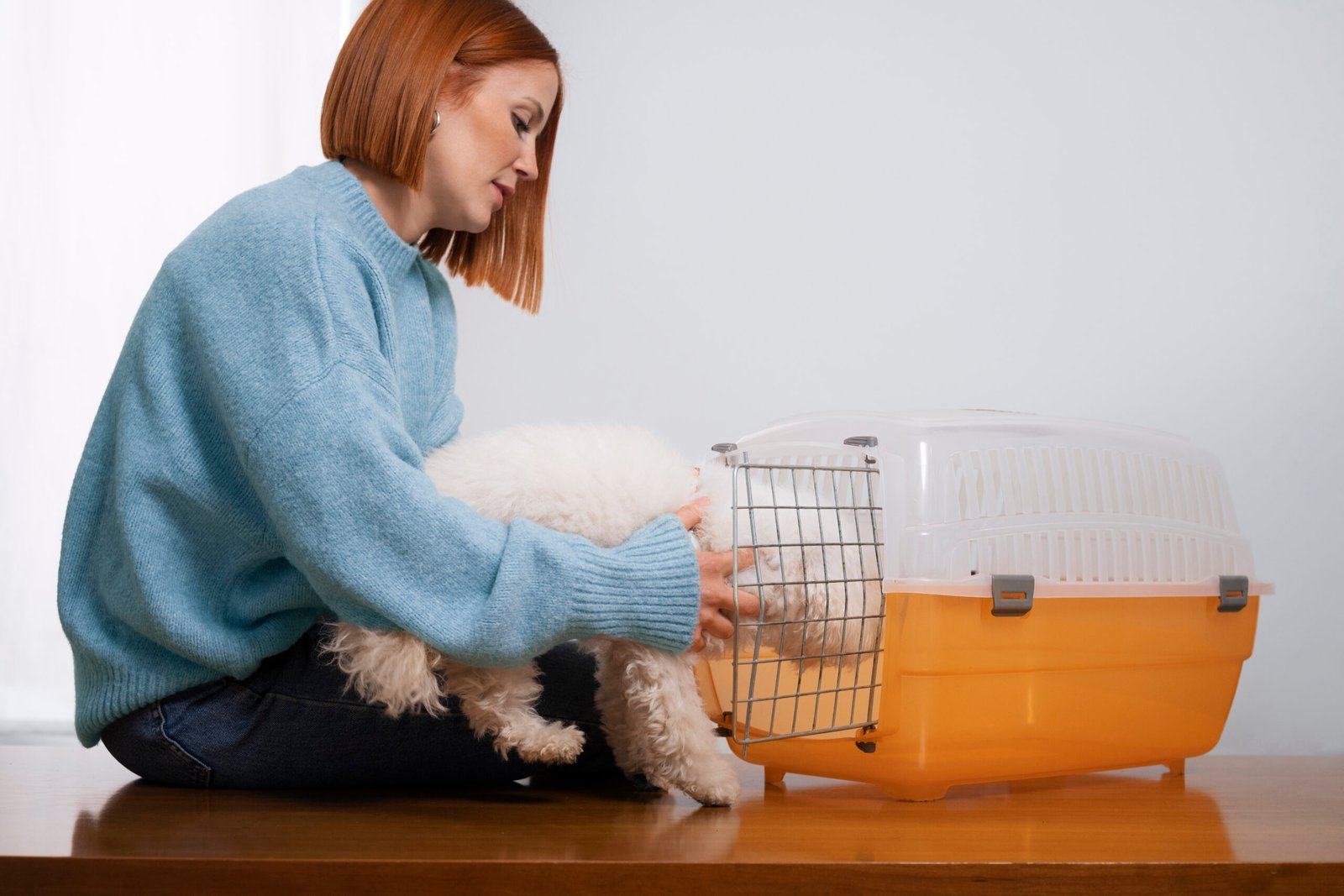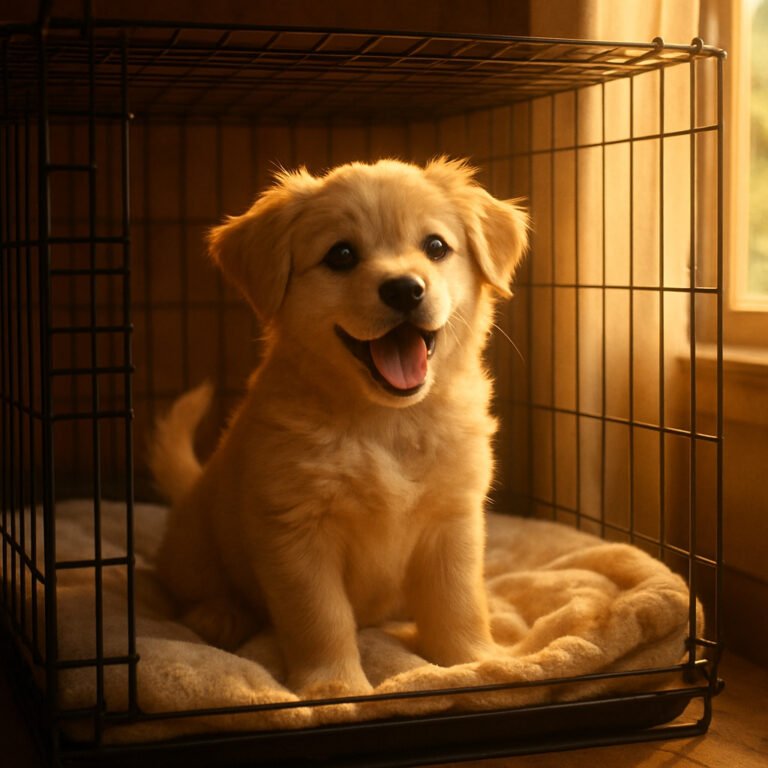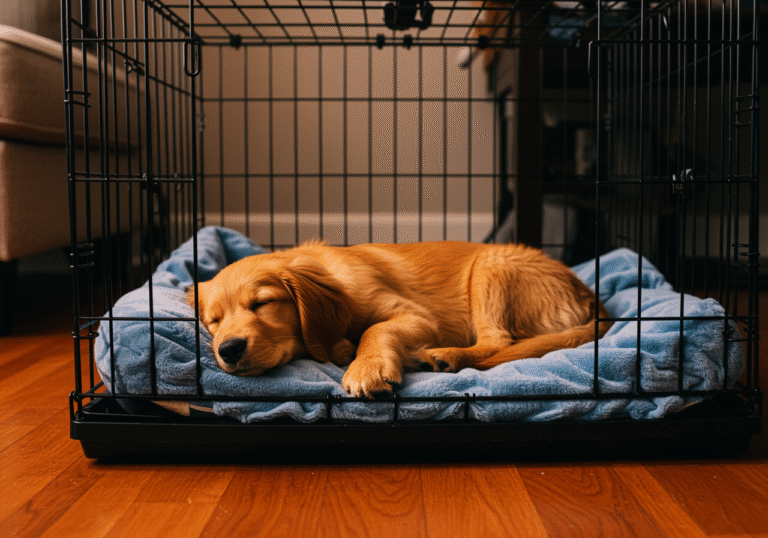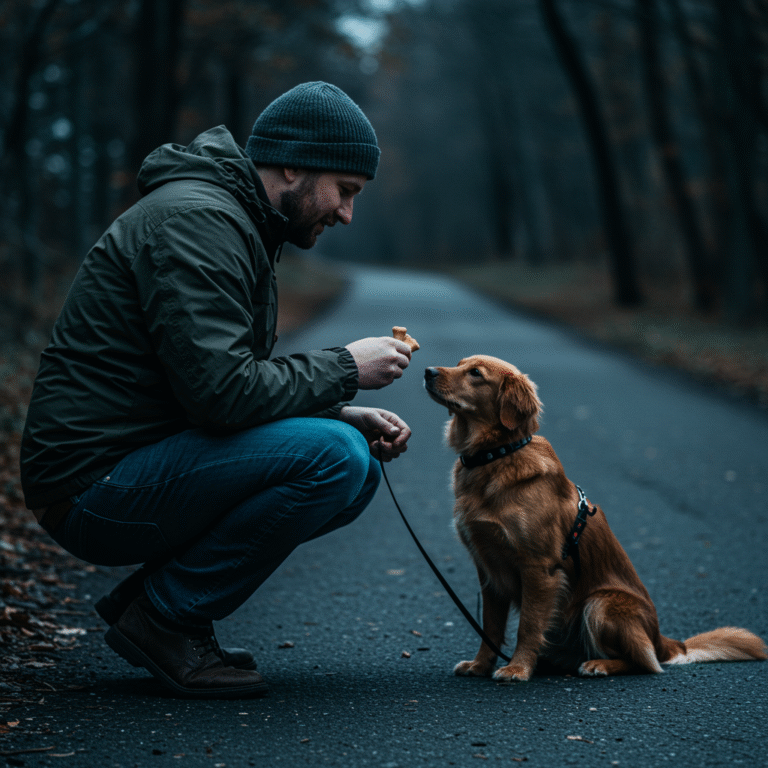Importance of a Smooth First Night in Crate Training
The journey to a well-trained puppy starts with the first night of crate training. A seamless experience not only sets the tone for future training sessions but also makes your puppy feel secure and cherished. Crate training offers benefits like establishing a structured routine for your furry friend and providing them with a safe retreat within your home.
Overview of Crate Training Benefits
Crate training is an essential component of a puppy’s upbringing. It serves as a tool for housebreaking, helping puppies learn bladder control and minimizing accidents. Additionally, crates provide a sense of security, replicating a den-like environment where dogs can relax and recharge. The wisdom of the American Kennel Club emphasizes that “crates provide dogs with a sense of security,” which is crucial in the early stages of their development.
Preparing for the First Night
Choosing the Right Crate
The right crate is pivotal for successful crate training. You’ll want a size that’s large enough for your puppy to stand, turn, and lie down comfortably, but not so spacious that they can designate a bathroom area. The material of the crate—whether metal, plastic, or fabric—should align with your puppy’s temperament and needs. The crate’s location in your home is equally important; placing it in a high-traffic area can foster a sense of inclusion and security.
Creating a Comfortable Environment
A cozy environment inside the crate is vital for your puppy’s comfort. Soft bedding like a fleece blanket can make your puppy feel at home. Consider including a couple of their favorite toys to keep them engaged if they wake during the night. The temperature should be kept at a moderate level to ensure they’re not too cold or too warm, and try to control any loud noises that might disturb their sleep.
Introducing the Crate to Your Puppy
Gradual Introduction Techniques
Introduce your puppy to their crate gradually to prevent overwhelming them. Begin by placing treats inside the crate while leaving the door open, encouraging them to enter willingly. You can then slowly increase the time they spend inside with the door closed, always ensuring they are comfortable and content.
Positive Reinforcement Strategies
Positive reinforcement is key during this introduction. Treat incentives can effectively motivate your puppy to spend time in the crate. Each successful entry or extended period of calm behavior should be rewarded with a treat or verbal praise, reinforcing positive behavior and building a pleasant association with the crate.
Nighttime Routine and Schedule
Establishing a Pre-bedtime Routine
Creating a consistent pre-bedtime routine helps signal to your puppy that it’s time for rest. This might include a light play session followed by a bathroom break to ensure they are ready to settle in for the night. Regularly sticking to this routine can ease the transition into bedtime.
Monitoring Bathroom Needs
Puppies have small bladders and might need to relieve themselves during the night. Monitor their behavior and learn their cues for needing to go outside. This will aid in preventing accidents and reinforce their ongoing training.
Setting a Regular Sleep Schedule
Establishing a regular sleep schedule helps to regulate your puppy’s internal clock. Aim for a consistent lights-out time each night to aid in developing a sleeping pattern that your puppy will come to expect and feel comfortable with.
Managing Common Challenges
Addressing Whining and Barking
Whining and barking are common in the initial stages of crate training. It’s crucial not to give in immediately, as this can reinforce such behavior. Providing reassurance through a gentle touch or a soothing voice can calm your puppy without encouraging the noise.
Managing Separation Anxiety
Separation anxiety can manifest through destructive behavior or incessant whining. Introducing a piece of clothing with your scent can comfort your puppy and ease their anxiety. Gradually extending the times they’re left alone will help them adjust to being in their crate.
Handling Nighttime Accidents
Accidents are a natural part of the training process, and patience is vital. If your puppy soils the crate, clean it immediately to remove scent cues that might encourage repetition. Remember to adjust their routine if accidents are habitual.
Tips for a Stress-free First Night
Staying Calm and Patient
Your demeanor helps set the tone for your puppy. Staying calm and patient, even when faced with challenges, reassures your puppy and fosters a peaceful environment. This calmness is vital for easing your puppy’s transition into crate training.
Adapting to Your Puppy’s Needs
Each puppy is unique, and their training should be tailored to suit their individual needs. Stay observant and be ready to adjust your methods, such as altering the pre-bedtime routine or trying different reinforcement strategies as needed.
Creating Lasting Positive Associations
Your goal is to make the crate an enjoyable space. Fill it with positive experiences that will last a lifetime. Regularly use treats, praise, and affection to continually reinforce the idea that the crate is a safe haven.
Long-term Success in Crate Training
Expanding Crate Use during the Day
As your puppy grows accustomed to the crate, begin expanding its use throughout the day. This can involve short sessions during naptime or when you’re away for brief periods, gradually preparing them for longer stays.
Tracking Progress and Adjusting Tactics
Keep a log of your puppy’s progress. Note any recurring issues or successes and adjust your training methods accordingly. This helps in identifying patterns and determining the best ways to address your puppy’s needs.
Celebrating Small Wins and Milestones
Each step forward in crate training is a victory worth celebrating. Whether it’s spending an entire night without distress or mastering the pre-bedtime routine, recognizing these milestones bolsters your puppy’s confidence and strengthens your bond.
 Conclusion
Conclusion
The first night with a new puppy is a memorable experience that lays the groundwork for a successful training journey. With thoughtful preparation and a compassionate approach, crate training can be a positive experience for both you and your puppy. Remember to celebrate each success and maintain patience during setbacks. As dog behaviorist Victoria Stilwell advises, “Training is a lifelong journey,” and your dedication will pay off in developing a happy, well-adjusted companion. 🐾## FAQ on Puppy’s First Night: Crate Training Success Tips
What Should I Do if My Puppy Refuses to Enter the Crate?
Sometimes puppies can be hesitant to enter the crate. Use positive reinforcement techniques to encourage them by tossing small treats inside or placing a favorite toy in the crate. If your puppy still refuses, try sitting near the crate and speaking softly to create a calm environment. Gradually, your puppy should start seeing the crate as less intimidating and more inviting.
How Long Will It Take for My Puppy to Adjust to Crate Training?
Adjusting to crate training varies for each puppy. Some puppies may feel comfortable within a few nights, while others could take several weeks to settle in. Consistency in routine and reinforcement strategies is the key to easing this transition. Keep observing your puppy’s behavior and adjust methods to suit their comfort and progress.
Can I Leave a Light On to Help My Puppy Sleep?
Leaving a light on may provide comfort for some puppies during their first few nights. However, ensure the light isn’t too bright, as this might disrupt their sleep cycle. Opt for a dim nightlight if your puppy seems more at ease with some illumination rather than complete darkness.
Is It Normal for My Puppy to Whine at Night?
Yes, it’s normal for puppies to whine during the first few nights. Whining can result from unfamiliar surroundings or a need to relieve themselves. Avoid immediately responding to the whining to prevent reinforcing the behavior. Instead, gently reassure your puppy and assess whether they need a potty break.
How Can I Prevent My Puppy from Associating the Crate with Punishment?
Avoid using the crate for disciplinary purposes. Consistently present the crate as a positive space where good things happen. Use treats, toys, and affectionate tone when interacting with your puppy in relation to the crate. This helps establish a positive association and makes the crate a space of comfort and safety.
Should I Feed My Puppy Inside the Crate?
Feeding your puppy inside the crate can enhance positive associations with the space. Doing so signals to your puppy that the crate is a safe and rewarding place. Start by placing their food bowl inside with the door open, and gradually close the door for short intervals while they eat.
Are There Any Risks of Leaving My Puppy in the Crate Too Long?
Yes, leaving your puppy in the crate for prolonged periods can lead to physical and emotional distress. A young puppy should not be crated for more than 3-4 hours at a time during the day. Overuse of the crate can result in anxiety and hinder their social learning experiences. Ensure your puppy has ample time outside the crate for exercise, socialization, and mental stimulation.


 Conclusion
Conclusion





